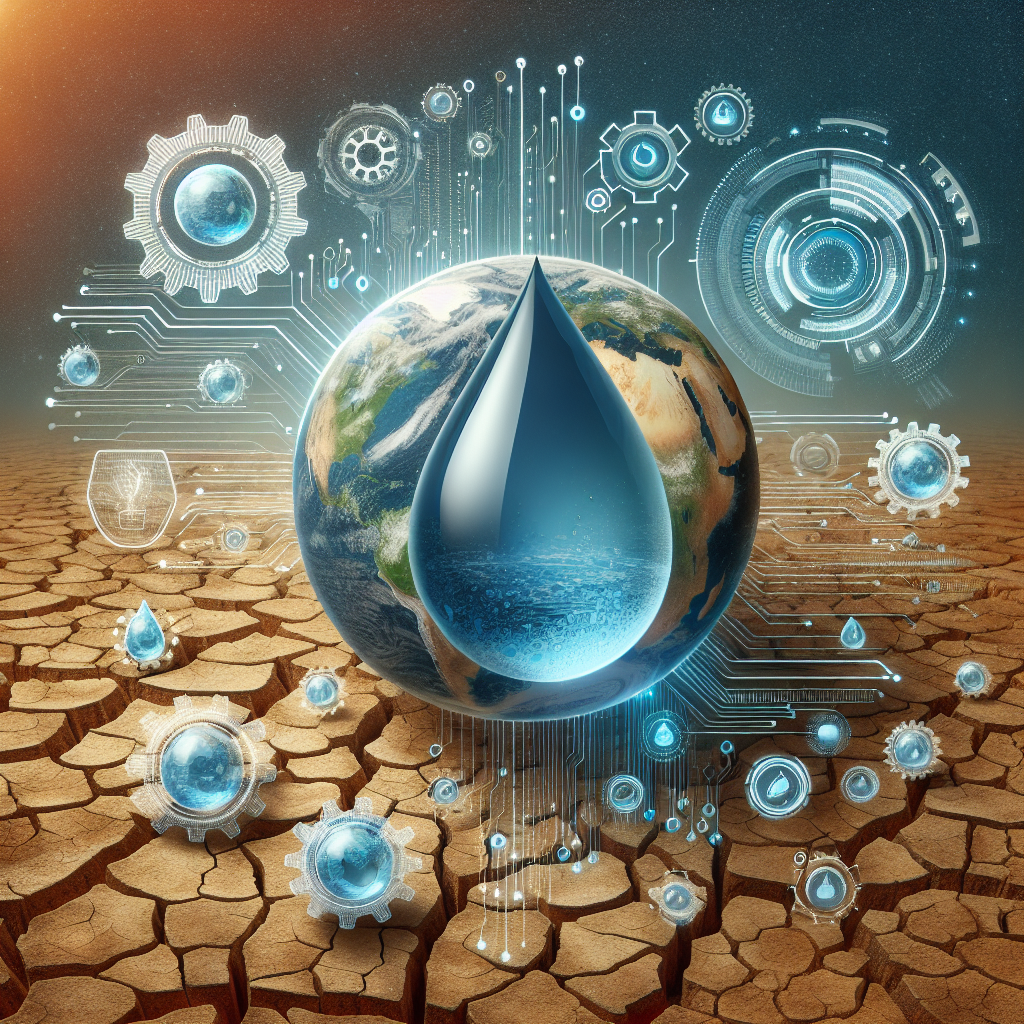Water Conservation: Tech Solutions for a Thirsty Planet
In a world where water scarcity affects more than 40% of the global population, conservation has become more than just a buzzword; it’s a necessary step towards sustainability and survival. The United Nations projects that by 2025, 1.8 billion people will be living in countries or regions with absolute water scarcity, and two-thirds of the world’s population could be under stress conditions. This pressing situation calls for innovative solutions, and technology is stepping up to the plate with promising answers for a thirsty planet.
The Tech-Driven Approach to Water Conservation
Smart Irrigation Systems
Agriculture consumes about 70% of the planet’s accessible freshwater, but much of it is wasted through inefficient practices. Smart irrigation technologies are set to change this landscape. These systems use weather forecasts, soil moisture sensors, and evapotranspiration data to optimize watering schedules and amounts, ensuring that crops receive exactly what they need. Not only do they conserve water, but they also improve crop yields and reduce the need for chemical inputs through precision agriculture.
Water Recycling and Reuse Technologies
Recycling and reusing wastewater can significantly reduce the demand for fresh water. Advanced treatment technologies, such as membrane filtration and reverse osmosis, are now capable of purifying wastewater to a level safe enough for irrigation, industrial processes, and even direct potable reuse. Singapore’s NEWater and the Orange County Groundwater Replenishment System in California are leading examples of how recycled water can sustainably augment water supplies.
Leak Detection Systems
A significant amount of water is lost in distribution systems due to leaks and pipe bursts. Innovative leak detection technologies, such as satellite-based remote sensing, acoustic sensors, and smart water meters, can identify and locate leaks with high accuracy. Early detection prevents water loss, reduces repair costs, and extends the lifecycle of infrastructure. For instance, the city of Venice now uses sophisticated algorithms to monitor its ancient water systems, preventing leaks in a city where water is both a lifeline and a threat.
Atmospheric Water Harvesting
Atmospheric water harvesting sounds like science fiction, but it’s increasingly becoming a practical solution to water scarcity. These systems extract water from humid air, condensing it into liquid water. They range from small, solar-powered devices suitable for individual households to larger installations capable of supplying water to entire communities. While the technology is still developing, it holds promise for arid regions where conventional sources of water are not readily available.
Desalination Technology
With the majority of the Earth’s water being saline, desalination offers a vast potential source of drinkable water. Modern desalination plants are becoming more energy-efficient and environmentally friendly, thanks to advances in membrane technology and energy recovery systems. Countries like Israel, Saudi Arabia, and Australia are leading the way in adopting desalination as a significant component of their water supply strategy.
The Challenges Ahead
Despite these technological advances, challenges remain. High costs, energy consumption, and environmental impacts are concerns that need addressing. Further innovation and investment in research and development are essential to make these solutions more accessible and sustainable.
Moreover, technology alone cannot solve the water crisis. A holistic approach, combining policy reform, community engagement, and education, is vital for promoting water conservation and ensuring equitable access to this precious resource.
FAQs
Q: Can technology really solve the water scarcity problem?
A: Technology offers powerful tools for addressing water scarcity, but it’s not a silver bullet. Success also depends on effective governance, public awareness, and sustainable management practices.
Q: Are these technologies affordable for developing countries?
A: Some technologies, like atmospheric water harvesting and smart irrigation, are becoming more affordable and adaptable to various contexts. However, the cost remains a barrier for widespread adoption, emphasizing the need for international cooperation and investment.
Q: How can individuals contribute to water conservation?
A: Individuals can make a difference by adopting water-saving practices at home, supporting sustainable products and technologies, and advocating for water conservation policies in their communities.
Q: Is recycled wastewater safe?
A: Yes, when treated with advanced purification technologies, recycled wastewater meets the highest safety standards and can be safer than some sources of drinking water.
Q: What’s the future of water conservation technology?
A: The future is promising, with ongoing research into more efficient, cost-effective, and environmentally friendly solutions. Innovations like nanotechnology for water purification and AI for water management are on the horizon.
Conclusion
As the global population continues to grow and climate change exacerbates water scarcity, the urgency to find sustainable solutions has never been greater. Technology, with its ability to offer innovative and efficient methods of conserving, recycling, and generating water, stands at the forefront of this challenge. By integrating these advancements with comprehensive water management strategies, there is hope for a future where water, our most precious resource, is abundantly available to all. The journey towards this future is a collective effort, requiring the participation of governments, businesses, communities, and individuals alike. Together, we can tackle water scarcity head-on and secure a hydrated and sustainable planet for generations to come.

